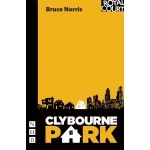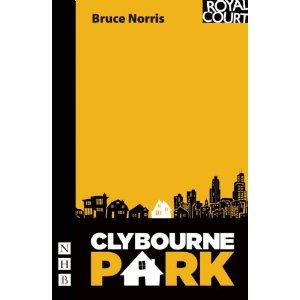Our choice for July 2011 is Clybourne Park by Bruce Norris. 1959. Russ and Bev are moving out of their desirable house in Clybourne Park. Their neighbours are alarmed because they have sold it to a black family.  As the arguments rage and tensions rise, the real reason comes seeping to the surface – 50 years later, a young white couple are moving in to the same house, which has grown shabby over the years. At a meeting to discuss their planned improvements, the same but different racial resentments are once more uncovered – Clybourne Park has had audiences alternately rolling in the aisles and gasping out loud at its shocking home-truths and satirical accuracy as it puts the knife into middle-class hypocrisy.
As the arguments rage and tensions rise, the real reason comes seeping to the surface – 50 years later, a young white couple are moving in to the same house, which has grown shabby over the years. At a meeting to discuss their planned improvements, the same but different racial resentments are once more uncovered – Clybourne Park has had audiences alternately rolling in the aisles and gasping out loud at its shocking home-truths and satirical accuracy as it puts the knife into middle-class hypocrisy.
Questions
- What was your experience reading the play in terms of racial awareness? Does it make a difference between reading and watching the play performed?
- Which is your favourite character?
- In what way does the concept of gentrification appear in the play?
- How does the author use political correctness as a device?
- Of the two acts, did one disturb you more than the other?
- There was one specific action common to both acts, what did it signify?
- What significance does the buried trunk make? The tree?
- Who does Karl represent?
- What did you think of the jokes in Act 2?
- Did you find the jokes funny?
- Betsy is deaf – what does that signify?
- Taking a step back, what were the overall messages of the play?
- Think of your current borough or area. Do you live in Clybourne Park today?
- Do you think this play works specifically in this particular time? Will it be relevant in another 50 years?
- Clybourne Park is considered a response to Lorraine Hansberry’s Raisin in the Sun. Would you be interested in reading it now?
Individual Ratings
DKB's Rating 





